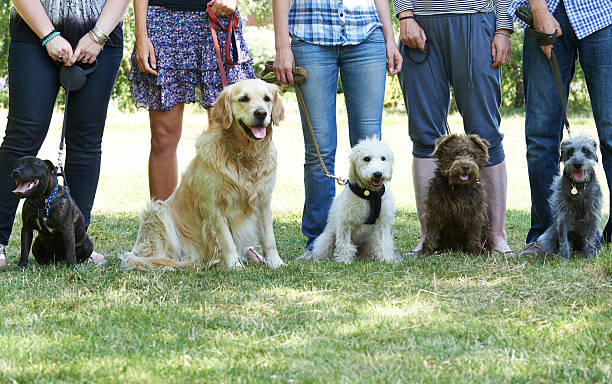Children should never be subjected to abuse when trying to correct their behavior. It is unreasonable to expect a youngster to think and behave exactly like a mature adult. Keep that developmental difference in mind when making parenting decisions. Just like with dog training, positive and negative reinforcement both have the potential to shape a child’s behavior.
Prioritize positive reinforcement with potty training.
Some pet owners respond to a mess on the carpet by rubbing a dog’s nose into the problem spot. This certainly isn’t an option with a child, but it also isn’t the best course of action with animals. Given frequent opportunities to do their business outdoors, many puppies quickly learn which behavior earns rewards and praise. Children should also be given positive reinforcement for using the toilet, and adults should be careful not to shame their kids for wetting the bed or other embarrassing messes.
A leash isn’t a substitute for discipline.
The uses of leashes on children tend to get mixed responses from bystanders and friends. But they can be necessary. While many cities have laws requiring that large breeds be kept on leashes, no similar law has been passed regarding unruly children. The simple fact is that some children (and pets) cannot be trusted to restrain themselves from sprinting into traffic. Even on a leash, some canines continue to pull their owners, bark and leap at strangers. Similarly, some youngsters on leashes can continue to make trouble within a six-foot radius of the parent. No single tool should be used as a substitute for proper parenting or dog training.
Shock collars are frowned upon.
Child and animal abuse are criminal offenses that rightly come with stiff penalties. Still, there are some gray areas when it comes to public spanking and some dog training devices. Spanking has been a staple disciplinary method for millennia, but adults must be aware that public spanking can be perceived as physical abuse. Similarly, shock collars and choke collars are controversial tools for dog training. Severity and context are two important variables that are often difficult for bystanders to assess, so it’s best to use other methods whenever possible.
Be the leader [At least pretend to].
Children and animals are tuned into social cues and body language that adults sometimes fail to notice. Both canines and kids naturally compete for a position in the social hierarchy, and it’s possible for the ranking master of a home to be the resident who crawls around on all fours. Even thought the canine or child may not work at a job that pays the bills, they can still be the decider when it comes time to wake up or eat. Without devising cruel and unusual punishment, the adult should remember who has the authority in the relationship. A strong, authoritative voice should be used for important commands, and appropriate punishment should be used for misbehavior.
With both dogs and offspring, communication and behavior change can be challenging. While respecting the basic rights of humans and animals, it is important to remember the differing levels of mental ability. It should be possible to find ways to discourage inappropriate behavior without inflicting harm. Clickers are better than treats for dog training, but candy is more socially acceptable for use with children.
